Common Evening-primrose (Oenothera biennis)
Family:
Evening-Primrose Family (Onagraceae)
Other Names:
coffee plant, cureall, fever plant, field primrose, four-o'clock, German-rampion, golden candlestick, king's cure-all, large rampion, night primrose, night willow-herb, sand lily, scabish, scavey, scurvish, speckled john, tree primrose, wild beet, yellow eveningprimrose.
Origin and Distribution:
It is likely that common evening-primrose, which is a North American native, was exported to Europe in the 1600's when written descriptions of it began appearing there. Now, it is naturalized all over Europe. In the U.S., its range includes an area between the east coast and North Dakota and it is located on the West Coast as well. Common evening-primrose can be found throughout Ohio growing in open disturbed areas such as fields, pastures, gardens, roadsides, and waste places. It prefers to grow in dry gravelly or sandy soil.
Plant Description:
Common evening-primrose is a biennial that produces a rosette of leaves the first year and flowers borne on an upright leafy stalk during the second year of growth. There are many biennial evening-primroses that appear similar and can be difficult to distinguish. Most have 4-petaled yellow flowers that open at dusk. A few, including common evening-primrose, have lance-shaped leaves without lobes. Leaves of common evening-primrose usually appear thin and crinkled and may have a reddish midrib. Also, leaves on the lower portion of the stem are often purplish. Reproduction is by seeds.
Root System:
The plant has a deep, yellow, fleshy taproot.
Seedlings and Shoots:
The location on the stem where the first two seed leaves (cotyledons) attach is usually tinged bright red. Young plants grow as rosettes over the first winter. The midribs of rosette leaves are typically reddish.
Stems:
Stems are upright, 1 to 6 feet tall, and woody. Branches form occasionally and always in the upper portion of the stem. The lower part of the stem is often tinged purple and somewhat hairy.
Leaves:
Leaves are alternate (1 leaf per node), 4 to 8 inches long, and have edges that are wavy or slightly toothed. Leaves either attach directly to the stem or to a very short leaf stalk (petiole) connected to the stem. Leaf shape resembles the head of a lance. Leaves on the lower portion of the stem are often purplish and somewhat hairy. The midrib of each leaf may be reddish.
Flowers:
Flowers are 1 to 2 inches wide, yellow, and have 4 oval-shaped petals. Flowers form at the tips of a long branches located on the upper part of the stem.
Fruits and Seeds:
Fruits are woody cylindrical pods about 1 inch long that taper toward the end. Each capsule is divided by lengthwise partitions into 4 cells. When dry, seed pods split downward revealing 4 chambers and releasing numerous seeds. Seeds are dark reddish-brown, 1/16 inch long, have a rough surface.
Similar Species:
Identification can be confusing because there is a large amount of variation within several very similar species in this genus. Therefore, an expert may be required if a definitive identification is needed. Similar species include cutleaf evening-primrose (Oenothera laciniata) that looks similar to common evening-primrose while young but has wavy or irregularly lobed leaves while those of common evening-primrose have smooth edges. Meadow sundrops (Oenothera pilosella) shares many characteristics with common evening-primrose except it has conspicuous soft hairs on the upper portion of its stems. Northern evening-primrose (Oenothera parviflora) has thicker, narrow leaves compared with common evening-primrose leaves, which are thinner and crinkled.
Biology:
Flowering begins in June. Flowers open at dusk and generally wilt the following morning. Stalks continue growing throughout the season so there is a constant succession until about September. Woody stems and seed capsules often persist throughout winter. It is common to find 100 capsules on a plant and over 100 seeds in each capsule. Seeds can remain viable for more than 80 years if buried in soil. To eliminate common evening-primrose from an area, the weed must be hoed while still in the rosette stage or mowed before seeds are produced. Response of common evening-primrose to herbicide applications varies from tolerant to susceptible.
Toxicity:
None known.
Facts and Folklore:
It is thought that 'Oenothera' is Greek for 'wine scenting' and refers to the ancient use of evening-primrose roots in scenting wine.
The plant was likely named 'evening-primrose' because its flowers open at dusk.
Because flowers are open over night, evening-primrose flowers are usually pollinated by night-flying insects.
Roots are edible if collected during the first year before the plant blooms.
Common evening-primrose has been assigned numerous medicinal properties. For example, researchers are experimenting with a rich oil extracted from the seeds for use as a treatment for burns and other skin wounds.
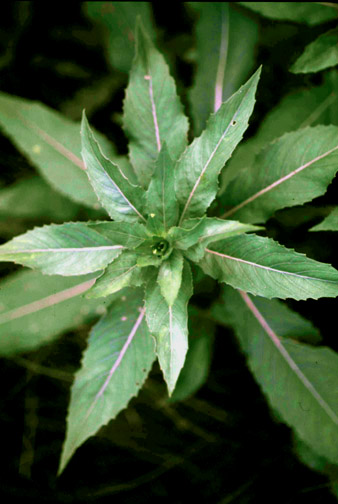
Common Evening-primrose plant.
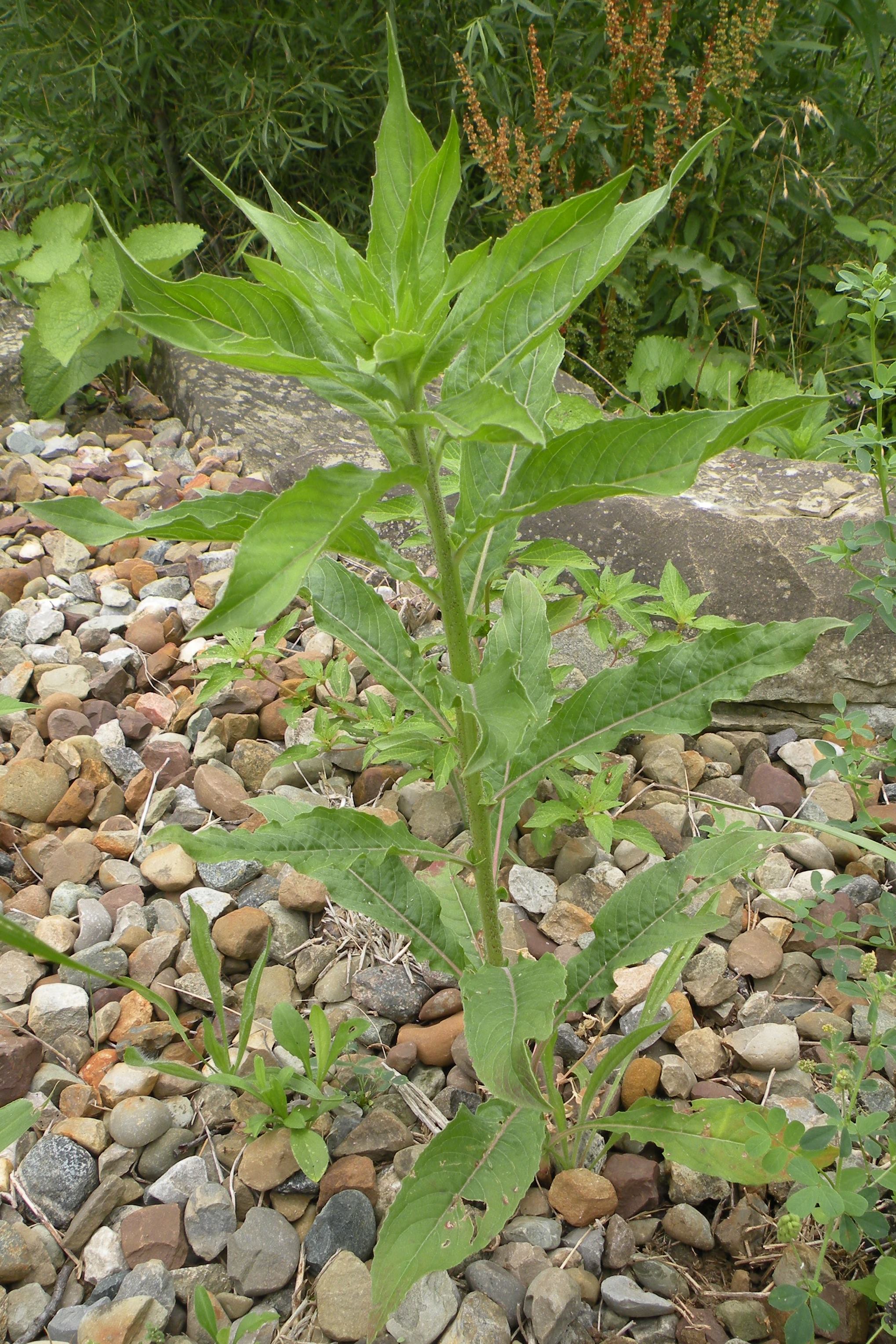
Lower portion of common evening-primrose stem, which may be somewhat hairy and have purple spots.
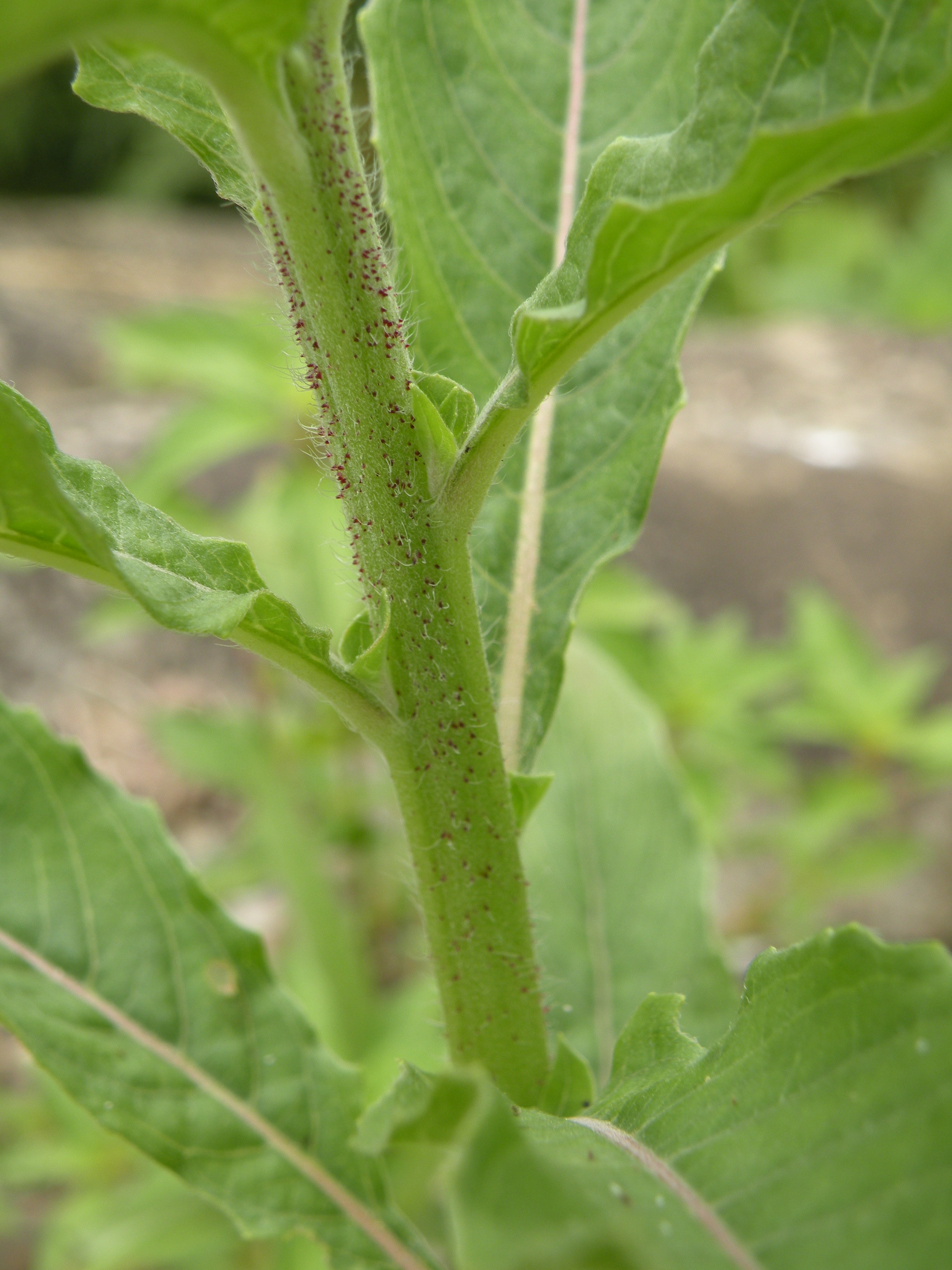
Common evening-primrose seeds.
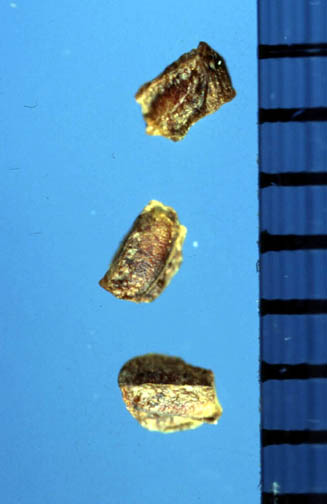
Rosette of common evening-primrose.
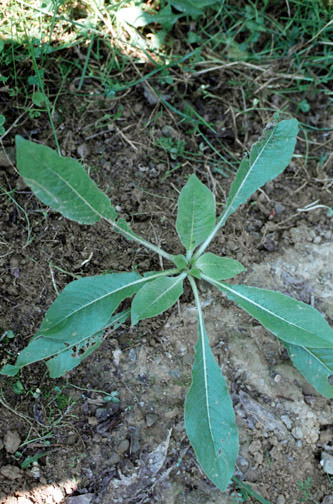
Seedpods of common evening-primrose turn brown and split open when mature.
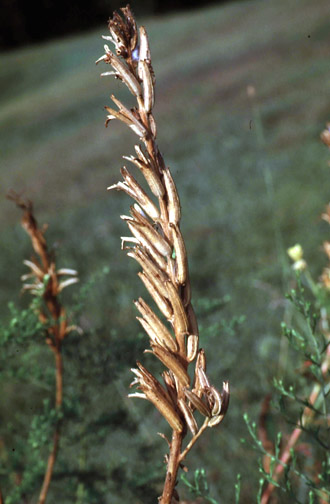
Developing seedpods of common evening-primrose.
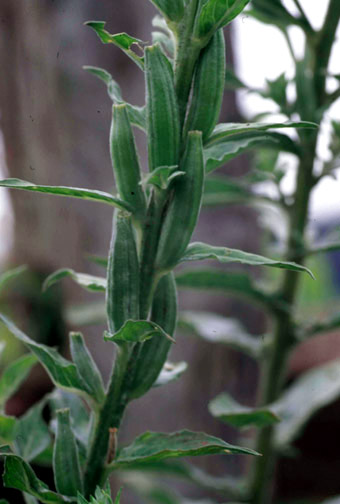
Side view of common evening-primrose flowers and flower buds.
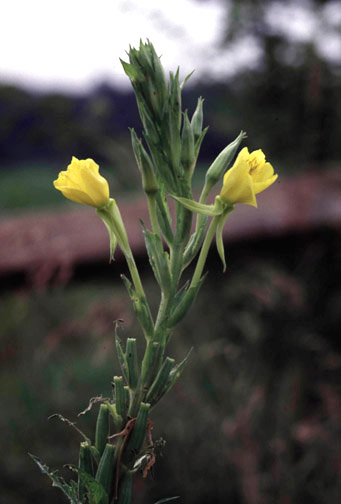
Close-up of common evening-primrose flower.
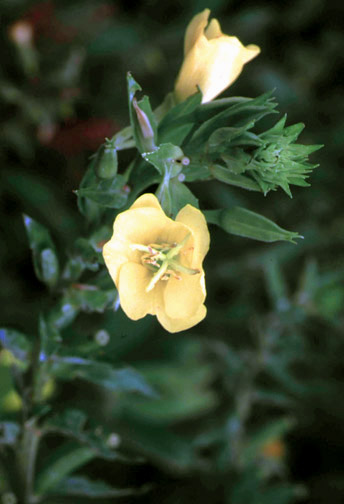
Common evening-primrose leaf.
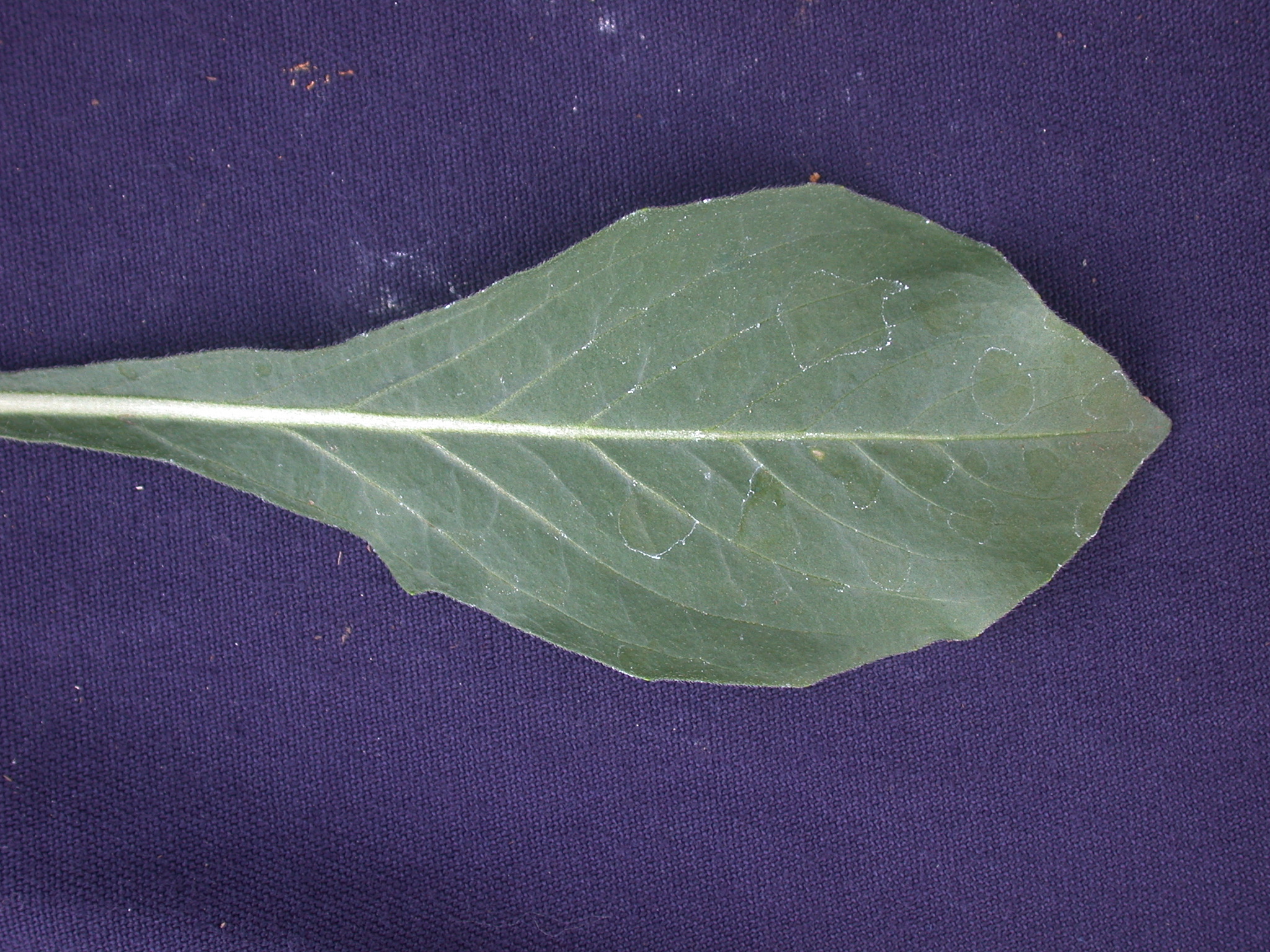
Common evening-primrose seedling.
